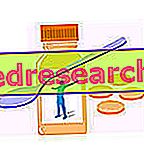Scroll down the page to read the summary table on ataxia.
| Ataxia | Consistent disorder in lack of muscle coordination, which makes it difficult to perform voluntary movements: ataxia causes progressive inability to move, often associated with muscle pain |
| General characteristics of ataxia |
|
| Degeneration of ataxia | Onset: few ataxic manifestations that progressively degenerate Evolution: pronounced ataxia in the legs and arms Degeneration: impairment of the voice and the articulation of speech, muscles, hearing and sight |
| Ataxia and ataxic syndromes |
|
| Ataxia: incidence index | Italy: about 5, 000 people suffering from ataxia 4.5-6.4 subjects affected per 100, 000 healthy individuals |
| Ataxia and associated diseases | Incontinence, swallowing difficulties, uncoordination and slowness of eye movements, other uncontrolled and involuntary movements of the head, trunk and lower / upper limbs, memory loss, cardiac disorders and bronchopulmonary complications |
| General classification of ataxia |
|
| Classification of ataxia according to the affected anatomical site |
|
| Hereditary and secondary ataxias |
|
| Classification of cerebellar ataxias based on age at onset |
|
| Classification of cerebellar ataxias according to the triggering factors |
|
| Genetic transmission of ataxia | Autosomal dominant transmission: a parent is affected by dominant ataxia → transmission of the mutated gene to the child Autosomal recessive transmission: healthy carriers of the disease → transmission of ataxia to the child |
| Ataxia: symptoms | Onset manifestations depend on the severity of the ataxic pathology and, above all, on the triggering cause Common factor in all ataxic forms: slow, progressive and unstoppable degeneration of ataxic symptoms
|
| Ataxia: complications | Ataxia: possible spy of neoplasms Possible cardiac, respiratory, swallowing degeneration |
| Ataxia: causes | Mutation of the genetic code of a gene: CNS alteration (attack on the cerebellum) Ataxia: consequence of more or less serious pathologies: infections, drug intoxication, alcohol or chemical substances, multiple sclerosis and demyelinating diseases, neurovegetative pathologies, malignant neoplasms, emboli, sickle cell anemia, vascular problems in general and lesions in the dorsal columns |
| Ataxia: diagnosis | The diagnosis of ataxia is mainly clinical and symptomatic. Diagnostic options:
|
| Ataxia: therapies and rehabilitation | There is no effective pharmacological therapy in neurological-muscular type ataxias
|
| Friedreich's ataxia | Description : the most famous degenerative movement disorder, a genetic anomaly with an autosomal-recessive transmission responsible for the progressive and inevitable damage to the central and peripheral nervous system Incidence index Approximately 100, 000 sick people from this ataxia, of which 1, 200 are Italian Molecular genetics Mutated gene responsible for the Frefreich ataxia: FXN or X25 Symptoms Onset : the affected subject is unable to maintain a certain correct posture for long periods Disease progression : disturbances in performing the simplest activities, such as eating, speaking, writing, etc. Degeneration and complications : severe heart disease, scoliosis, hollow foot, increased heart rate, altered electrocardiogram and enlarged ventricular septum walls Diagnosis and therapies
|
| Cerebellar ataxia | Description : the cerebellar forms frame neurodegenerative disorders, responsible for the progressive motor uncoordination of the lower and upper limbs, involuntary ocular wave movements and difficulty in articulating the word Classification :
Onset : walking and postural deficits, and with difficulty in coordinating joint movements Evolution of the disease: damage to the eye (optic atrophy, nystagmus, pupil abnormalities, retinitis pigmentosa, ophthalmoplegia etc.) Other symptoms: cerebellum hypoplasia, hyporeflexia, asthma, emphysema, muscle spasticity, diabetes, speech deficit and behavioral disorders Causes : The causes of transmission of cerebellar ataxia lie in genetics and gene mutation Hypothetically related diseases: Vitamin E deficiency, hypogonadotropic hypogonadism, celiac disease, neoplasms, inflammatory and vascular lesions affecting the cerebellum Diagnosis:
Effective treatment has not yet been identified. Important palliative therapies (eg physiotherapy) |
| Charcot-Marie-Tooth Ataxia | Description : it is one of the family neurological hereditary diseases: first the syndrome affects the nerves, then, by induction, it also damages the muscles and the other sites of the body Incidence : a rather rare disease, which however represents the most widespread inherited neurological ataxia. Afflicts 36 cases per 100, 000 healthy Terminology and synonyms:
Given the heterogeneity of disorders derived from the disease, the ataxic forms of Charcot-Marie-Tooth have been classified into five large groups, in turn differentiated into other sub-categories Diagnosis and therapies The diagnosis highlights:
|



